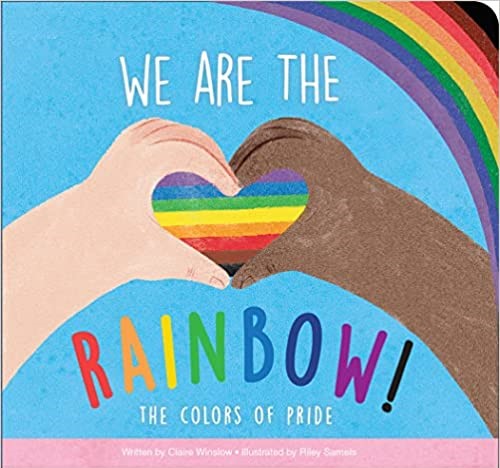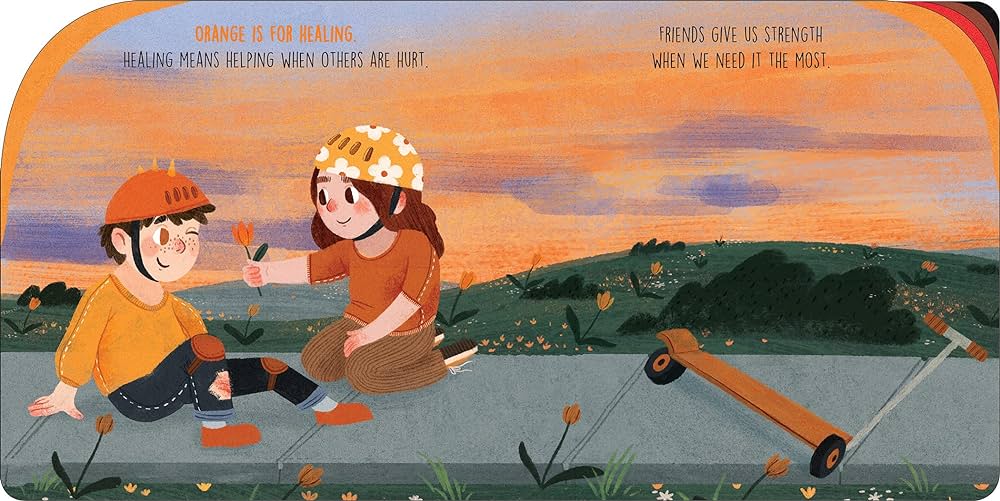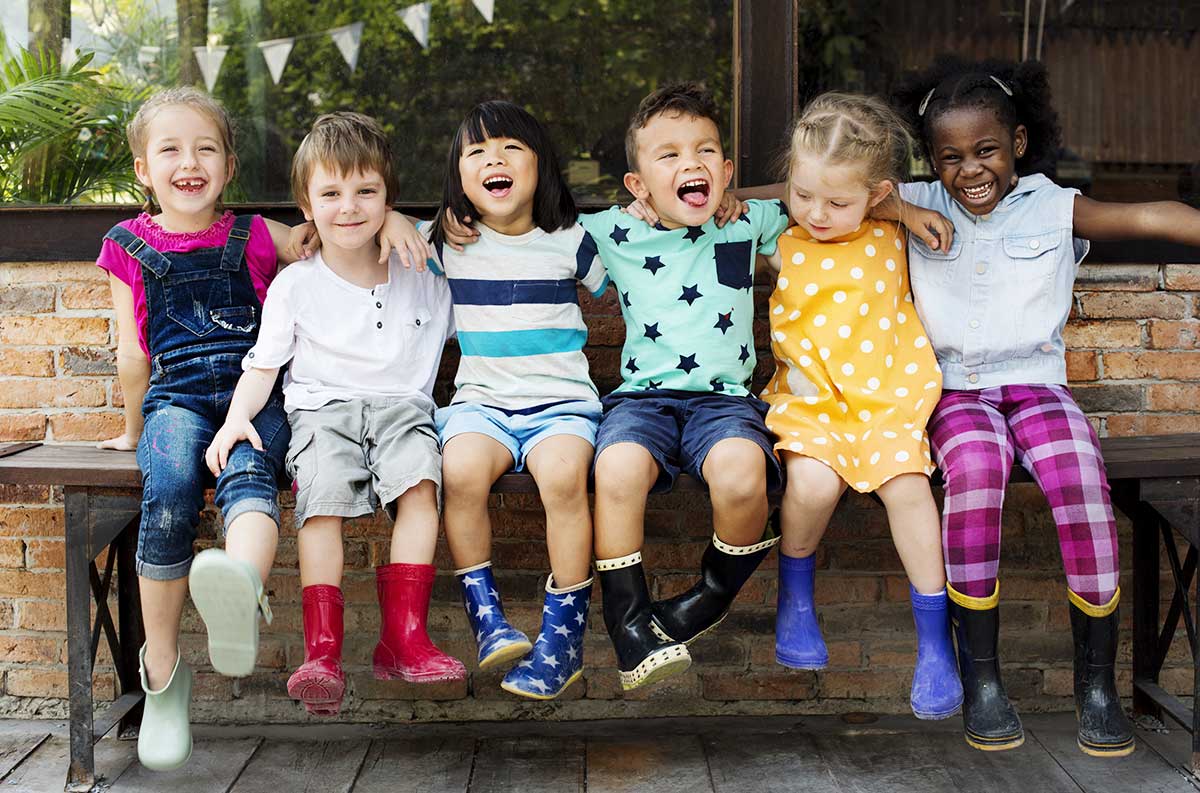
Inclusive Children's Book Teaching Guide
We Are the Rainbow! The Colors of Pride
What is this book about?
What does the rainbow mean to you? Learn the meanings behind the colors of the LGBTQ+ Pride flag.
Tabbed pages reveal each color of the rainbow as you share the book with your early learners.
With affirming messages of love and inclusion, this uplifting board book is a great introduction to Pride for the under-five set.
Who is depicted in this book?
- LGBTQ+ led families
- Children or adults who are/may be LGBTQ+
- Children or adults who transcend gender stereotypes
What early childhood themes and concepts does this book explore?
- Colors and their connections to emotions and action (Note: This book is based on the colors from the Philadelphia Pride flag, which includes brown and black to acknowledge and celebrate LGBTQ+ people of color.)
- The board book is constructed with colored tabs to allow quick access to the meaning of each flag color, which can enhance the experience of a book share.
- Different types of families
- Ways that humans show love and care for one another and for their community/world
How does this book support anti-bias education?
We Are the Rainbow! The Colors of Pride can be used to represent and affirm diverse families to all children and highlight what all families share. This book can also be used to encourage children to build and show awareness and acceptance of different kinds of families beyond their own and appreciate that different kinds of families love and care for their children.
Depending on how the book is shared or used—and the developmental level of the children—the images and text may be used to support the following core goals from the book, Anti-Bias Education for Young Children and Ourselves:
Identity—Teachers will nurture each child’s construction of knowledgeable and confident personal and social identities so that children will demonstrate self-awareness, confidence, family pride, and positive social identities.
Diversity—Teachers will promote each child’s comfortable, empathetic interactions with people from diverse backgrounds so that children will express comfort and joy with human diversity, use accurate language for human differences, and form deep, caring connections across all dimensions of human diversity.
How can this book be used to meet early childhood learning standards?
For all ages
Use We Are the Rainbow! The Colors of Pride to meet early childhood literacy standards >
For children from birth to age three
Teaching suggestion: Point out colors, familiar objects, and the depicted people and actions. Model different words for parents and identify different types of families.
What Illinois Early Learning Guideline does this meet for children from birth to age three?
Developmental DomainCognitive Development
Standard: Concept DevelopmentChildren demonstrate the ability to connect pieces of information in understanding objects, ideas and relationships.
Indicators for children:
- Begins to identify and name objects and people (16–24 months)
- Begins to identify characteristics of the object, such as “red ball” (16–24 months)
- Identifies characteristics of objects and people when named, such as colors (21–36 months)
For preschoolers (ages three to five)
Teaching suggestion: Encourage the children to notice and discuss the similarities and differences among the families featured in the book.
What Illinois Early Learning and Development Standards does this meet for preschoolers?
Social Studies Standard18BDevelop an awareness of self within the context of family.
Benchmark 18.B.ECa:
Understand that each of us belongs to a family and recognize that families vary.
Teaching suggestion: Encourage the children to notice and discuss human diversity, including skin color. Probe their assumptions about gender expression and expand their ideas of how gender “looks” by discussing the children in the book and the ways that they express and enjoy themselves.
What Illinois Early Learning and Development Standards does this meet for preschoolers?
Social Studies Standard18AExplore people, their similarities and their differences.
Benchmark 18.A.ECa:
Recognize similarities and differences in people.
Teaching suggestion: Compare this book with another book featuring families and/or the colors of the Rainbow flag, such as Pride Colors by Robin Stevenson or Rainbow: A First Book of Pride by Michael Genhart. Discuss the ideas and emotions that the colors represent. These ideas can also be carried over into exploratory art using similar colors.
What Illinois Early Learning and Development Standards does this meet for preschoolers?
The Arts Standard26BUnderstand ways to express meaning through the arts.
Benchmark 26.B.ECa:
Use creative arts as an avenue for self-expression.
Teaching suggestion: As you share this book, stop and ask the children to describe how the illustrations convey the meaning behind each flag color. Ask questions such as: What does it mean to take care of the world? What shows harmony here?
What Illinois Early Learning and Development Standards does this meet for preschoolers?
Language Arts Standard1EUse increasingly complex phrases, sentences and vocabulary.
Benchmark 1.E.ECb:
Exhibit curiosity and interest in learning new words heard in conversations and books.
Benchmark 1.E.ECc:
With teacher assistance, use new words acquired through conversations and book‐sharing experiences.
Teaching suggestion: Initiate a discussion about what it means to include others and how inclusion affects people and changes our communities.
What Illinois Early Learning and Development Standards does this meet for preschoolers?
Social/Emotional Development Standard31ADevelop positive relationships with peers and adults.
Benchmark 31.A.ECb:
Recognize the feelings and perspectives of others.
See inside this book.


What other resources are available?
Visit the ReadingZone website to view sample pages from We Are the Rainbow! The Colors of Pride and read an author interview.
Learn more about Pride flags and how to use them as teaching tools here.
